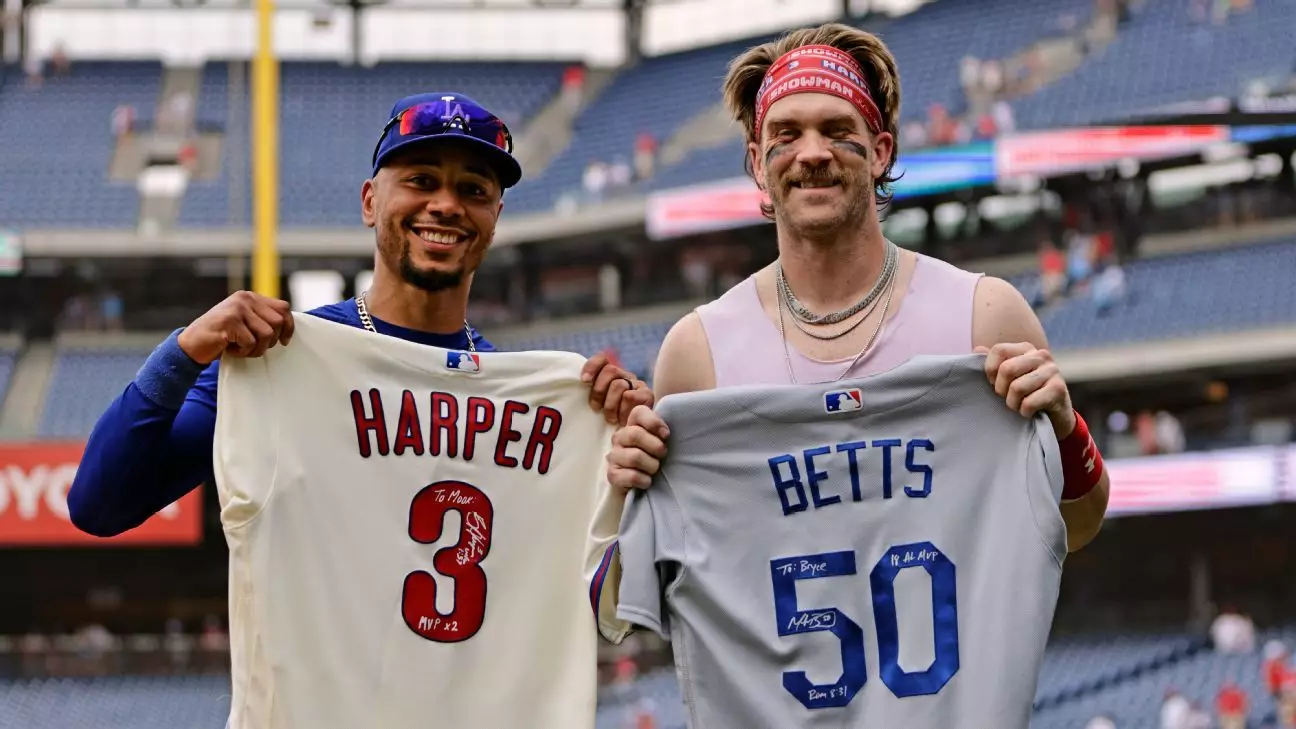In recent years, Major League Baseball has witnessed a seismic shift in financial dynamics, predominantly driven by high-value contracts and extravagant team payrolls. Among the frontrunners of this spending spree is the Los Angeles Dodgers, whose almost $320 million payroll epitomizes this trend. Renowned slugger Bryce Harper, carrying the weight of a $330 million contract himself, has notably expressed admiration for the Dodgers’ strategy of spending big to secure talent, dismissing detractors who complain about the team’s lavish spending as “losers.” This shift raises questions about the nature of competition in baseball and what it means for teams that operate under stringent financial constraints.
Understanding the New Financial Landscape
The 2023 MLB season has ushered in a new era where the average salary for players has crossed the $5 million mark, showcasing an unprecedented level of financial investment in talent. The New York Mets topped the payroll charts with Juan Soto’s staggering $61.9 million contract, signaling a willingness among franchises to invest heavily in elite talent. The Dodgers followed closely, augmenting their roster with high-profile signings that emphasize their dedication to maintaining a competitive edge in the league. The influx of deferred payments in player contracts also complicates the landscape, as executives navigate balancing immediate expenditures against long-term financial commitments.
The Cost of Winning
The evident disparity between high-spending teams like the Dodgers and more frugally operated franchises raises voices of concern regarding competitiveness within the league. Players like Harper argue that such spending not only attracts talent but also elevates a franchise’s brand stature — a critical factor in a city like Los Angeles, which offers vibrant culture and unparalleled lifestyles. It’s not merely about assembling a winning team; it’s about creating a desirable destination for athletes. The implications of a salary cap are now hotter than ever as fans and players alike scrutinize the economic balance in today’s MLB. Imagine a future where financial equity is enacted; how might that realign the competitive landscape?
Dodgers vs. Phillies: A Clash of Titans
As the Phillies prepared to face the reigning champions, the Dodgers, there was palpable excitement in the air. Harper and his teammates are not shy about their own spending history; with a payroll ranking among the highest in the league, they have made their own investment in success. The tension leading up to these matchups showcases not only the rivalry built on performance but also on contrasting financial philosophies. The introduction of stars such as Shohei Ohtani, who, despite his deferred payments problem, carries a striking economic and performance influence, adds another layer of drama to the season. With Harper, Wheeler, and their marquee players poised to compete, the stakes are considerably high, making every game a test of financial commitment versus seasoned talent.
The Broader Implications for Baseball
Commissioner Rob Manfred’s acknowledgement of growing concerns regarding inequities indicates a pivotal moment for baseball. The ongoing conversation about possible reforms highlights the necessity for the league to adapt to prevent widening gaps between teams—those committed to high payrolls versus those cautious of financial risks. The long-term health of MLB may hinge on how these conversations evolve. Every decision made by teams under financial duress can significant ripple throughout the league, affecting not only competitiveness but also fan engagement.
Moreover, as young talents emerge and seek lucrative contracts, the fallout from recent practices will likely steer their choices in an environment where financial incentives shape landscapes heavily. As the Dodgers and their counterparts continue to flex their financial muscles, it simultaneously serves as a rallying call for smaller franchises to assert themselves, innovate, and discover new avenues to sustain competitive viability in the face of overwhelming payrolls.
In a sport interlaced with history, tradition, and now hyper-commercialization, the future of baseball hangs in the balance. The prelude to an era of reform formats an anticipation for how the league will navigate this intricate blend of finance and competitive spirit. The conversations sparked by influential figures, such as Bryce Harper, will undoubtedly shape the future image of baseball as both an enterprise and a beloved pastime.

